Computation Operations Chapter Notes | Math Olympiad for Class 2 PDF Download
| Table of contents |

|
| Introduction |

|
| 1. Addition |

|
| 2. Subtraction |

|
| 3. Multiplication |

|
| 4. Division |

|
Introduction
Computation operations deal with the study of numbers and the operations performed on numbers. Mathematics involves a set of four fundamental operations:
- Addition (+)
- Subtraction (−)
- Multiplication (×)
- Division (÷)
Let's understand one by one:
1. Addition
Addition is an operation that involves combining two or more numbers. If we want to make a number bigger, then we use addition. We add numbers together to get a bigger number. The symbol plus (+) shows addition.
For example, when two numbers 300 and 100 are added together, the result is 400. It is written as: 300 + 100 = 400
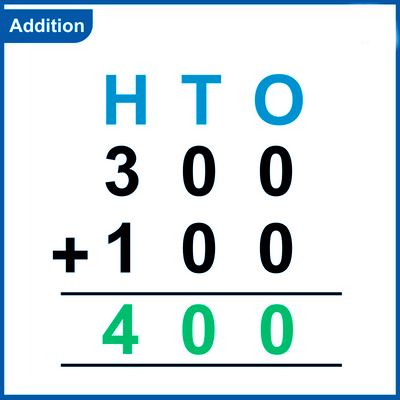
Example: A first bucket has 240 apples, a second bucket has 190 guavas and a third bucket has 220 oranges. What is the total number of fruits?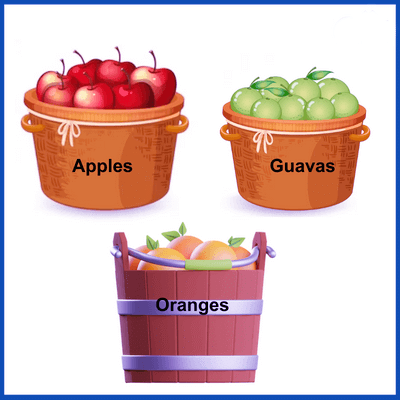
(a) 550
(b) 650
(c) 750
(d) 850
Ans: (b)
Sol: Number of apples in the first bucket = 240
Number of guavas in the second bucket = 190
Number of oranges in the third bucket = 220
The total number of fruits in all the buckets = 240 + 190 + 220 = 650 fruits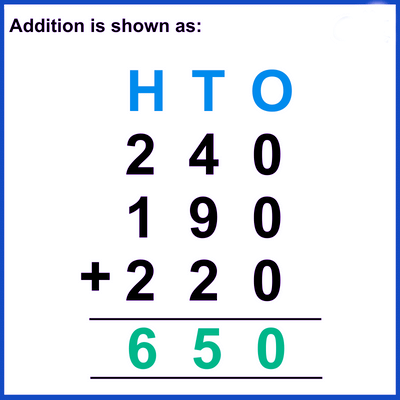
2. Subtraction
Subtraction is an operation of taking away a number from another number. If we want to make a number smaller, then we use subtraction. We take away a number from another number to get a smaller number. The symbol minus (−) shows subtraction.
For example, when 100 is subtracted from 300, the result is 200. It is written as:
300 − 100 = 200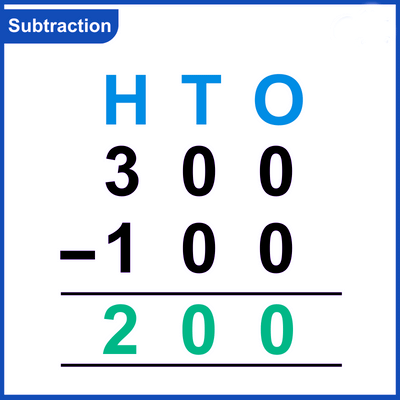 Example: The zoo has a lot of birds in the cage. The owner of the zoo purchased 213 more birds and now the cage has 729 birds. How many birds did the cage have at the beginning?
Example: The zoo has a lot of birds in the cage. The owner of the zoo purchased 213 more birds and now the cage has 729 birds. How many birds did the cage have at the beginning?
(a) 416
(b) 496
(c) 516
(d) 596
Ans: (c)
Sol: Number of birds in the cage now = 729
Number of birds purchased = 213
Total number of birds at the beginning = 729 − 213 = 516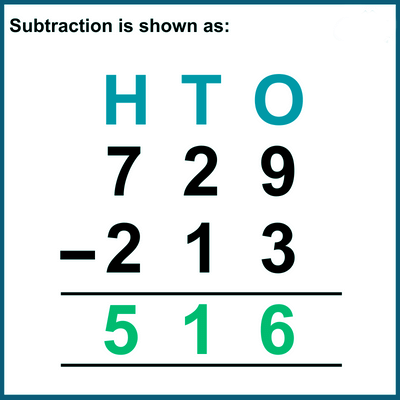
3. Multiplication
Multiplication is an operation that involves repeatedly adding the same number. Imagine we want the same number many times. Instead of adding many times, we use multiplication. It's like adding the number over and over. The symbol times (×) shows multiplication.
For example, when 30 is multiplied by 10, the result is 300.
It is written as:
30 × 10 = 300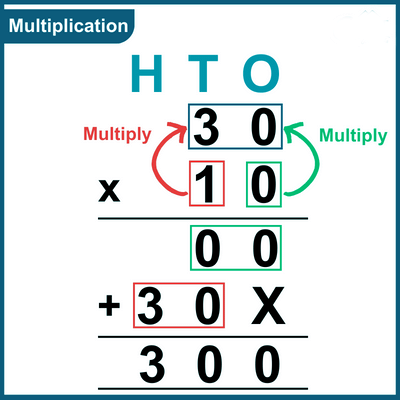
Example: A garden has 55 plants in each row. How many plants are there in the 15 rows of the garden? (a) 725
(a) 725
(b) 825
(c) 925
(d) 1025
Ans: (b)
Sol: Number of plants in each row = 55
Number of rows = 15
Total number of plants in the garden = 55 × 15 = 825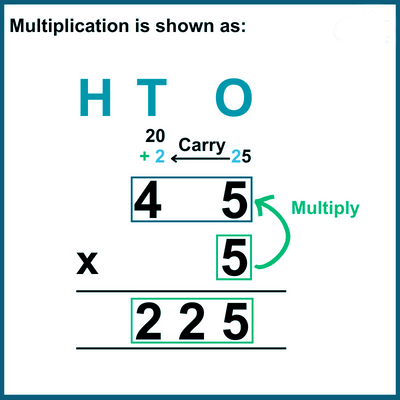
4. Division
Division is an operation that consists of repeatedly subtracting the same number. If we have 42 chocolates and want to share them equally among 6 children, we use division. It's like taking away parts of the number to share. The symbol sign (÷) shows division.
For example, when 300 is divided by 100, the result is 3. It is written as:
300 ÷ 100 = 3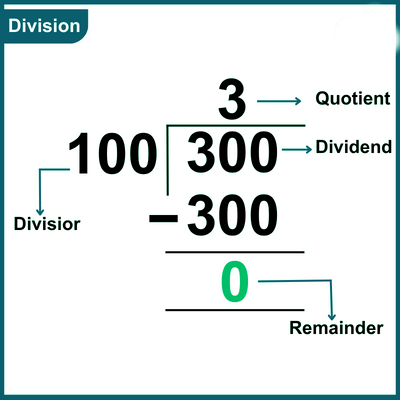
Example: 15 trucks are carrying 900 sacks of rice. How many sacks of rice does a truck carry?
(a) 50
(b) 55
(c) 58
(d) 60
Ans: (d)
Sol: Total number of sacks of rice = 900
Number of trucks =15
Number of sacks of rice in a truck = 900 ÷ 15 = 60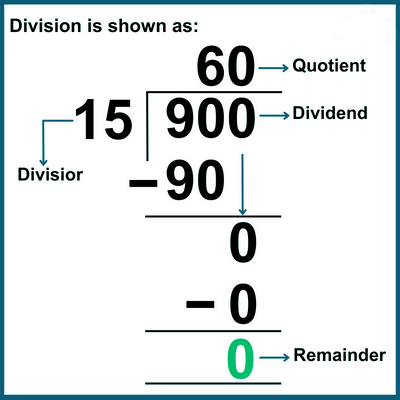
|
32 videos|79 docs|77 tests
|
FAQs on Computation Operations Chapter Notes - Math Olympiad for Class 2
| 1. What are the basic operations in computation? |  |
| 2. How can I improve my computation skills? |  |
| 3. What is the importance of computation in daily life? |  |
| 4. Are there specific strategies for solving computation problems quickly? |  |
| 5. How do I prepare for a computation operations exam? |  |















